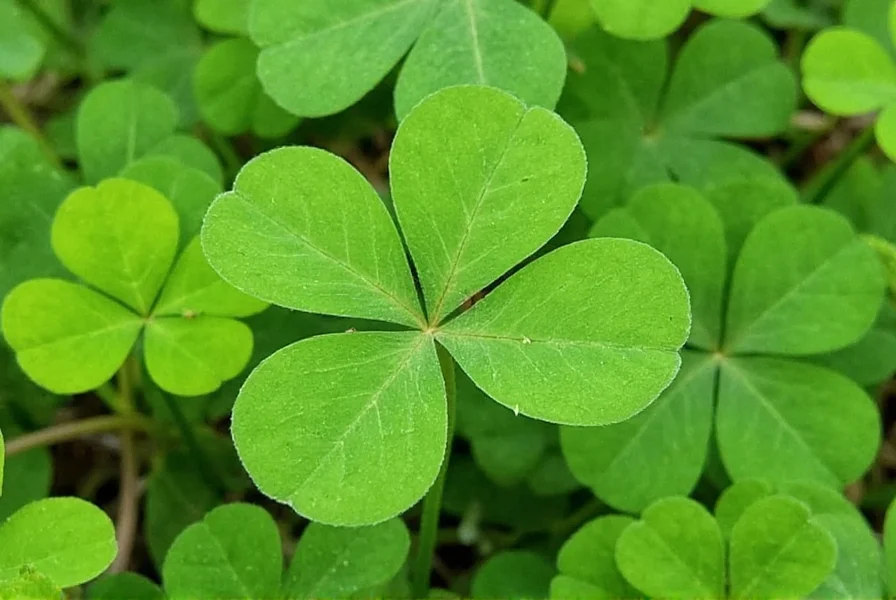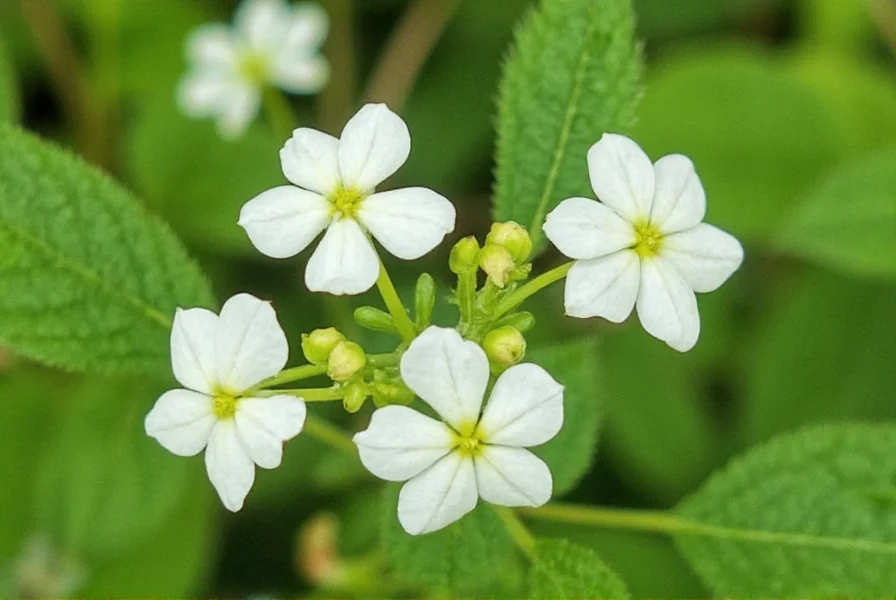For gardeners and land managers seeking sustainable alternatives to conventional lawns, white Dutch clover seed offers a practical solution that benefits both the environment and maintenance budgets. This comprehensive guide explores the science-backed advantages, proper planting techniques, and realistic expectations for incorporating this versatile plant into your landscape.
Understanding White Dutch Clover Characteristics
White Dutch clover (Trifolium repens) distinguishes itself from other clover varieties through specific biological traits that make it particularly valuable for agricultural and landscaping applications. Unlike its taller relatives, this variety typically grows 4-8 inches high, forming a dense, creeping mat through stolons (above-ground stems) that root at nodes.
The plant produces characteristic white flower heads that occasionally have a pink tinge, blooming from late spring through summer. These flowers serve as excellent nectar sources for bees and other pollinators, supporting local ecosystems. The trifoliate leaves feature the classic clover shape with a light "V" marking, and the plant demonstrates remarkable resilience in both full sun and partial shade conditions.
| Characteristic | White Dutch Clover | Microclover | h>Crimson Clover |
|---|---|---|---|
| Height | 4-8 inches | 2-4 inches | 12-24 inches |
| Lifespan | Perennial | Perennial | Annual |
| Flower Color | White (sometimes pink) | White | Bright red |
| Best Use | Lawn alternative, pasture | Low-maintenance lawns | Cover crop, wildlife food |
| Nitrogen Fixation | High | High | Moderate |
Scientific Benefits of White Dutch Clover Seed
White Dutch clover's most significant advantage lies in its nitrogen-fixing capability. Through a symbiotic relationship with rhizobia bacteria in root nodules, this plant converts atmospheric nitrogen into a form usable by surrounding vegetation. Research from agricultural extension services shows established white Dutch clover can contribute 100-150 pounds of nitrogen per acre annually, reducing or eliminating the need for synthetic fertilizers.
Unlike traditional turfgrass, white Dutch clover demonstrates impressive drought tolerance once established. Its deep taproot system (reaching 18-24 inches) accesses moisture unavailable to shallow-rooted grasses. During dry periods, the plant may go dormant but typically recovers quickly with rainfall or irrigation—making it an excellent choice for water conservation landscaping with white dutch clover seed.
Ideal Growing Conditions for White Dutch Clover
While adaptable, white Dutch clover performs best under specific conditions. It thrives in USDA hardiness zones 3-10, tolerating temperatures as low as -40°F when established. The plant prefers slightly acidic to neutral soils (pH 6.0-7.0) but demonstrates surprising adaptability to various soil types, including clay, loam, and sandy soils.
For those wondering can white dutch clover grow in clay soil, the answer is yes—with proper preparation. Amending heavy clay with organic matter improves drainage while maintaining the moisture retention clover prefers. In extremely compacted soils, aeration before planting significantly increases establishment success.

Planting Guide: How to Establish White Dutch Clover Successfully
Successful establishment of white Dutch clover begins with proper site preparation. Remove existing vegetation either through solarization, smothering, or careful herbicide application (if appropriate for your situation). Loosen the top 2-3 inches of soil without turning it over completely.
The optimal planting time depends on your climate:
- Cooler climates: Early spring (March-April) or early fall (August-September)
- Warmer climates: Late fall (October-November)
When determining how much white dutch clover seed per acre you'll need, follow these guidelines:
- New lawn installation: 2-3 pounds per 1,000 square feet
- Overseeding existing lawn: 1-2 pounds per 1,000 square feet
- Pasture or erosion control: 3-5 pounds per 1,000 square feet
Mix seeds with a carrier like sand (3:1 ratio) for even distribution. After broadcasting, lightly rake seeds into the soil (no deeper than 1/4 inch) and water gently but thoroughly. Maintain consistent moisture for 7-10 days until germination occurs.
Maintenance Requirements for Established White Dutch Clover
One of white Dutch clover's greatest advantages is its low maintenance requirements compared to traditional turfgrass. Once established, it requires:
- Mowing: Only when exceeding 6-8 inches (typically 1-3 times per season)
- Watering: 1 inch per week during establishment; minimal supplemental water once mature
- Fertilizing: Generally unnecessary due to nitrogen fixation
- Weed control: Hand-pull persistent weeds; avoid broadleaf herbicides
For those concerned about white dutch clover seed attracting bees, this is both true and beneficial. The flowers do attract pollinators, which supports local ecosystems. If bee activity is a concern in high-traffic areas, mow during periods of minimal flowering or consider planting in less-frequented areas of your property.
Common Challenges and Solutions
While generally trouble-free, white Dutch clover can face certain challenges:
Yellowing leaves: Often indicates poor drainage or overwatering. Improve soil structure with organic matter and reduce irrigation frequency.
Bare patches: May occur from heavy foot traffic. Overseed affected areas with additional white Dutch clover seed at half the normal rate.
Weed invasion: In the first growing season, weeds may compete with establishing clover. Hand-weed as needed; established clover typically outcompetes most weeds.
Winter kill: In extremely cold regions, some dieback may occur. Re-seed affected areas in spring with a white dutch clover seed planting guide specific to your climate zone.
White Dutch Clover in Sustainable Landscaping
As environmental awareness grows, white Dutch clover has gained popularity as part of eco-friendly landscaping strategies. Its ability to fix nitrogen eliminates the need for synthetic fertilizers that contribute to water pollution. The dense growth habit suppresses weeds naturally, reducing herbicide requirements.
For homeowners seeking best white dutch clover seed for lawns, look for certified seed with high germination rates (typically 85% or better) and minimal weed seed content. Avoid seeds treated with pesticides unless absolutely necessary for your specific situation.
When comparing white dutch clover seed vs microclover, consider your specific needs. Microclover (a smaller variety) grows lower and produces fewer flowers, making it ideal for formal lawn settings where flower maintenance is undesirable. Traditional white Dutch clover offers greater resilience and is generally more affordable.
Practical Applications Beyond Lawns
White Dutch clover's versatility extends far beyond residential lawns:
- Erosion control: Its dense root system stabilizes soil on slopes and banks
- Pasture enhancement: Provides high-protein forage for livestock while improving soil
- Honey production: Produces nectar that yields light, mild-flavored honey
- Garden pathways: Creates soft, resilient walking surfaces between garden beds
- Orchard floors: Maintains soil health without competing excessively with tree roots
For agricultural applications, white Dutch clover serves as an excellent cover crop in crop rotation systems. When terminated, its biomass decomposes to release nitrogen and improve soil structure—making it valuable for organic farming with white dutch clover seed.
Conclusion: Is White Dutch Clover Right for You?
White Dutch clover seed offers a sustainable, low-maintenance alternative to traditional turfgrass that provides ecological benefits while reducing lawn care requirements. Its nitrogen-fixing properties, drought tolerance, and adaptability make it suitable for various applications from residential lawns to agricultural systems.
While it may not provide the perfectly uniform appearance of manicured turfgrass, white Dutch clover delivers practical advantages that align with modern landscaping priorities focused on water conservation, reduced chemical inputs, and ecosystem support. For those willing to embrace a slightly different aesthetic, this versatile plant represents an intelligent choice for sustainable land management.
Frequently Asked Questions
How long does white Dutch clover seed take to germinate?
White Dutch clover seed typically germinates within 7-15 days when soil temperatures reach 55-75°F. Optimal germination occurs with consistent moisture during the first week after planting. Cooler temperatures may extend germination time up to 21 days.
Can white Dutch clover survive winter in cold climates?
Established white Dutch clover is remarkably cold-hardy and typically survives winter in USDA zones 3-10. While top growth may die back in freezing temperatures, the crown and roots remain viable and regrow in spring. In extremely harsh winters, some thinning may occur but usually recovers with minimal overseeding.
Does white Dutch clover require special soil preparation?
White Dutch clover adapts to various soil types but performs best in well-drained soil with pH between 6.0-7.0. For new plantings, remove existing vegetation and lightly loosen the top 2-3 inches of soil. In compacted soils, aeration before planting improves establishment. Unlike many plants, white Dutch clover doesn't require nitrogen fertilizer due to its natural nitrogen-fixing ability.
How often should I water white Dutch clover after establishment?
Once established (after 6-8 weeks), white Dutch clover requires minimal supplemental watering. During extended dry periods (3+ weeks without rain), provide 1 inch of water to maintain green color. The plant will naturally go dormant during drought but typically recovers quickly when moisture returns, making it ideal for water-wise landscaping.
Will white Dutch clover take over my entire lawn?
White Dutch clover spreads gradually through stolons but won't aggressively overtake established turfgrass. When overseeding into existing lawns, it typically creates a mixed lawn rather than completely replacing grass. In bare areas or thin lawns, it may become more dominant. Mowing height affects spread—higher mowing encourages more horizontal growth.











 浙公网安备
33010002000092号
浙公网安备
33010002000092号 浙B2-20120091-4
浙B2-20120091-4